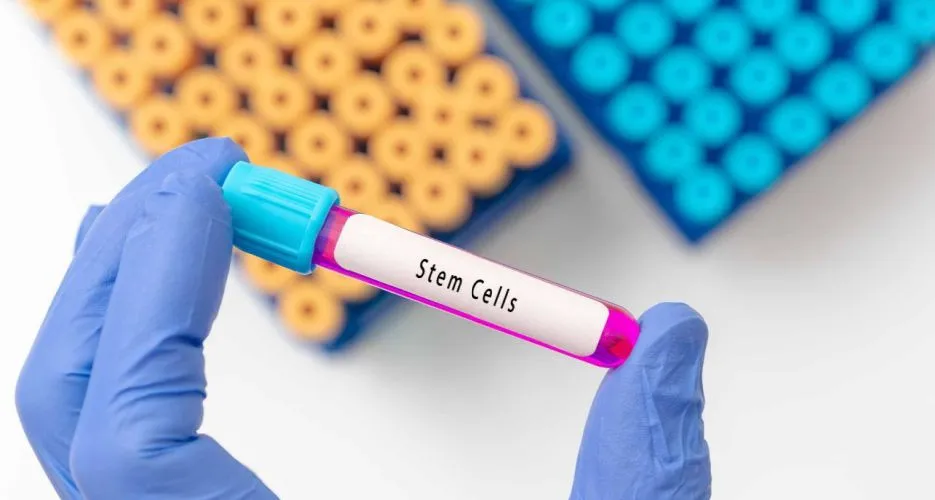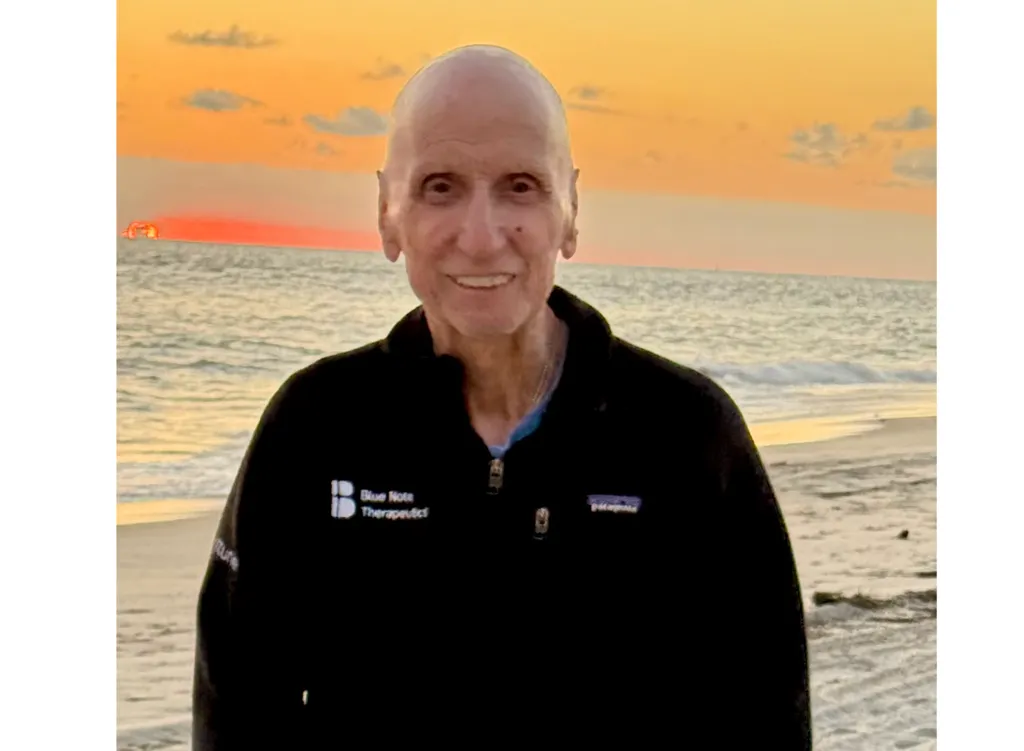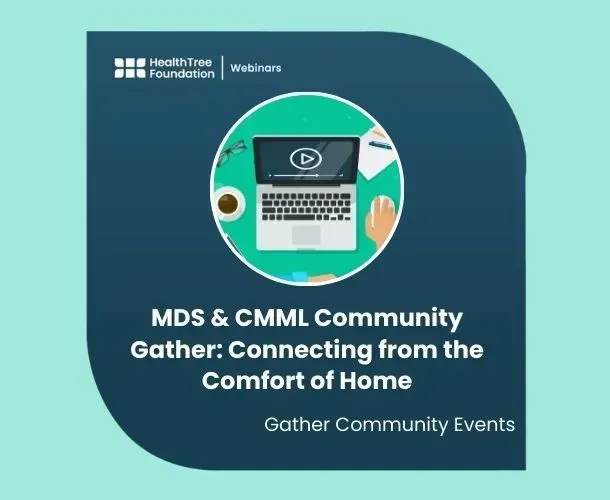Venetoclax for AML: An Overview

Standard therapy for patients with acute myeloid leukemia (AML) typically consists of intensive chemotherapy, usually referred to as “7+3” chemotherapy, and consisting of cytarabine plus an anthracycline such as daunorubicin or idarubicin; however, older patients with AML may be ineligible for this approach, due to the toxic effects of this treatment and the risk of complications. Historically, treatment options for older patients with AML have been limited to less intensive chemotherapy or hypomethylating agents. Recent advancements have led to the development of novel agents, such as venetoclax, which may improve outcomes for patients with AML who are ineligible for intensive chemotherapy.
How Does Venetoclax Work?
AML cells produce unusually high levels of the protein BCL2, which prevents these cancerous cells from dying. Additionally, high levels of BCL2 expression have been linked to chemotherapy resistance. Venetoclax is an oral, highly selective small molecule that inhibits the B-cell lymphoma 2 (BCL2) protein. Venetoclax can bind to cells expressing BCL2 and cause cancer cell death.
Venetoclax Alone is Not Enough to Treat AML
Initial studies of venetoclax at 800 mg showed some positive effects, with higher doses showing no additional benefit. The benefit was not long-lasting, suggesting that BCL2 inhibition alone may not be a sufficient treatment for patients with AML.
Venetoclax Combined for Improved Results
Earlier studies of venetoclax in combination with less intensive chemotherapy (low-dose cytarabine) and hypomethylating agents (azacitidine) in patients with AML who were ineligible for intensive chemotherapy showed encouraging results. This led to the development of two phase 3 trials to assess these combinations.
The VIALE-A trial enrolled 431 patients who received azacitidine in combination with venetoclax or placebo:
- The combination of azacitidine and venetoclax was an effective treatment, leading to longer survival compared with azacitidine and placebo (median overall survival of 14.7 vs 9.7 months).
The VIALE-C trial included 211 patients who received low-dose cytarabine plus venetoclax or placebo:
- An analysis of this trial with a longer follow-up showed that the addition of venetoclax to low-dose cytarabine improved survival when compared with placebo (median overall survival of 8.4 vs 4.1 months).
Results from these trials led to the U.S. Food and Drug Administration (FDA) granting approval to venetoclax (Venclexta, Abbvie) in combination with azacitidine, decitabine, or low-dose cytarabine for patients with AML aged 75 years or older or who are ineligible for intensive chemotherapy.
Future Directions of Venetoclax for AML Treatment
Several clinical trials are investigating new venetoclax-based combinations. These include venetoclax plus intensive chemotherapy regimens or venetoclax plus azacitidine in combination with novel agents. Triplet combinations of venetoclax plus azacitidine plus a targeted therapy for patients with specific AML mutations, such as FLT3, IDH1, IDH2, NPM1, and KMT2A-rearranged, are being explored. Additionally, venetoclax plus azacitidine has the potential to prolong remission when used as a maintenance therapy.
Conclusion
The introduction of venetoclax has changed the treatment landscape of AML, particularly for older patients. Venetoclax, in combination with hypomethylating agents, represents a new standard of care for patients ineligible for intensive treatment and has substantially improved outcomes.
To learn more about venetoclax and other medicines used to treat AML, check our educational free videos at Healthtree University for AML. Click the button below to create a free account:
Sources:
Standard therapy for patients with acute myeloid leukemia (AML) typically consists of intensive chemotherapy, usually referred to as “7+3” chemotherapy, and consisting of cytarabine plus an anthracycline such as daunorubicin or idarubicin; however, older patients with AML may be ineligible for this approach, due to the toxic effects of this treatment and the risk of complications. Historically, treatment options for older patients with AML have been limited to less intensive chemotherapy or hypomethylating agents. Recent advancements have led to the development of novel agents, such as venetoclax, which may improve outcomes for patients with AML who are ineligible for intensive chemotherapy.
How Does Venetoclax Work?
AML cells produce unusually high levels of the protein BCL2, which prevents these cancerous cells from dying. Additionally, high levels of BCL2 expression have been linked to chemotherapy resistance. Venetoclax is an oral, highly selective small molecule that inhibits the B-cell lymphoma 2 (BCL2) protein. Venetoclax can bind to cells expressing BCL2 and cause cancer cell death.
Venetoclax Alone is Not Enough to Treat AML
Initial studies of venetoclax at 800 mg showed some positive effects, with higher doses showing no additional benefit. The benefit was not long-lasting, suggesting that BCL2 inhibition alone may not be a sufficient treatment for patients with AML.
Venetoclax Combined for Improved Results
Earlier studies of venetoclax in combination with less intensive chemotherapy (low-dose cytarabine) and hypomethylating agents (azacitidine) in patients with AML who were ineligible for intensive chemotherapy showed encouraging results. This led to the development of two phase 3 trials to assess these combinations.
The VIALE-A trial enrolled 431 patients who received azacitidine in combination with venetoclax or placebo:
- The combination of azacitidine and venetoclax was an effective treatment, leading to longer survival compared with azacitidine and placebo (median overall survival of 14.7 vs 9.7 months).
The VIALE-C trial included 211 patients who received low-dose cytarabine plus venetoclax or placebo:
- An analysis of this trial with a longer follow-up showed that the addition of venetoclax to low-dose cytarabine improved survival when compared with placebo (median overall survival of 8.4 vs 4.1 months).
Results from these trials led to the U.S. Food and Drug Administration (FDA) granting approval to venetoclax (Venclexta, Abbvie) in combination with azacitidine, decitabine, or low-dose cytarabine for patients with AML aged 75 years or older or who are ineligible for intensive chemotherapy.
Future Directions of Venetoclax for AML Treatment
Several clinical trials are investigating new venetoclax-based combinations. These include venetoclax plus intensive chemotherapy regimens or venetoclax plus azacitidine in combination with novel agents. Triplet combinations of venetoclax plus azacitidine plus a targeted therapy for patients with specific AML mutations, such as FLT3, IDH1, IDH2, NPM1, and KMT2A-rearranged, are being explored. Additionally, venetoclax plus azacitidine has the potential to prolong remission when used as a maintenance therapy.
Conclusion
The introduction of venetoclax has changed the treatment landscape of AML, particularly for older patients. Venetoclax, in combination with hypomethylating agents, represents a new standard of care for patients ineligible for intensive treatment and has substantially improved outcomes.
To learn more about venetoclax and other medicines used to treat AML, check our educational free videos at Healthtree University for AML. Click the button below to create a free account:
Sources:

about the author
Dylan Barrett
Dylan is a freelance medical writer based in Cork, Ireland. He previously worked in independent medical education while living in London and is now collaborating with HealthTree to develop resources for blood cancer patients. His background is in genetics, and he has a passion for innovative scientific research. In his spare time, he enjoys sports, traveling, and spending time with his family and friends.
More on Treatment Advances
Trending Articles

Get the Latest Acute Myeloid Leukemia Updates, Delivered to You.
By subscribing to the HealthTree newsletter, you'll receive the latest research, treatment updates, and expert insights to help you navigate your health.
Together we care.
Together we cure.
3x Faster.











